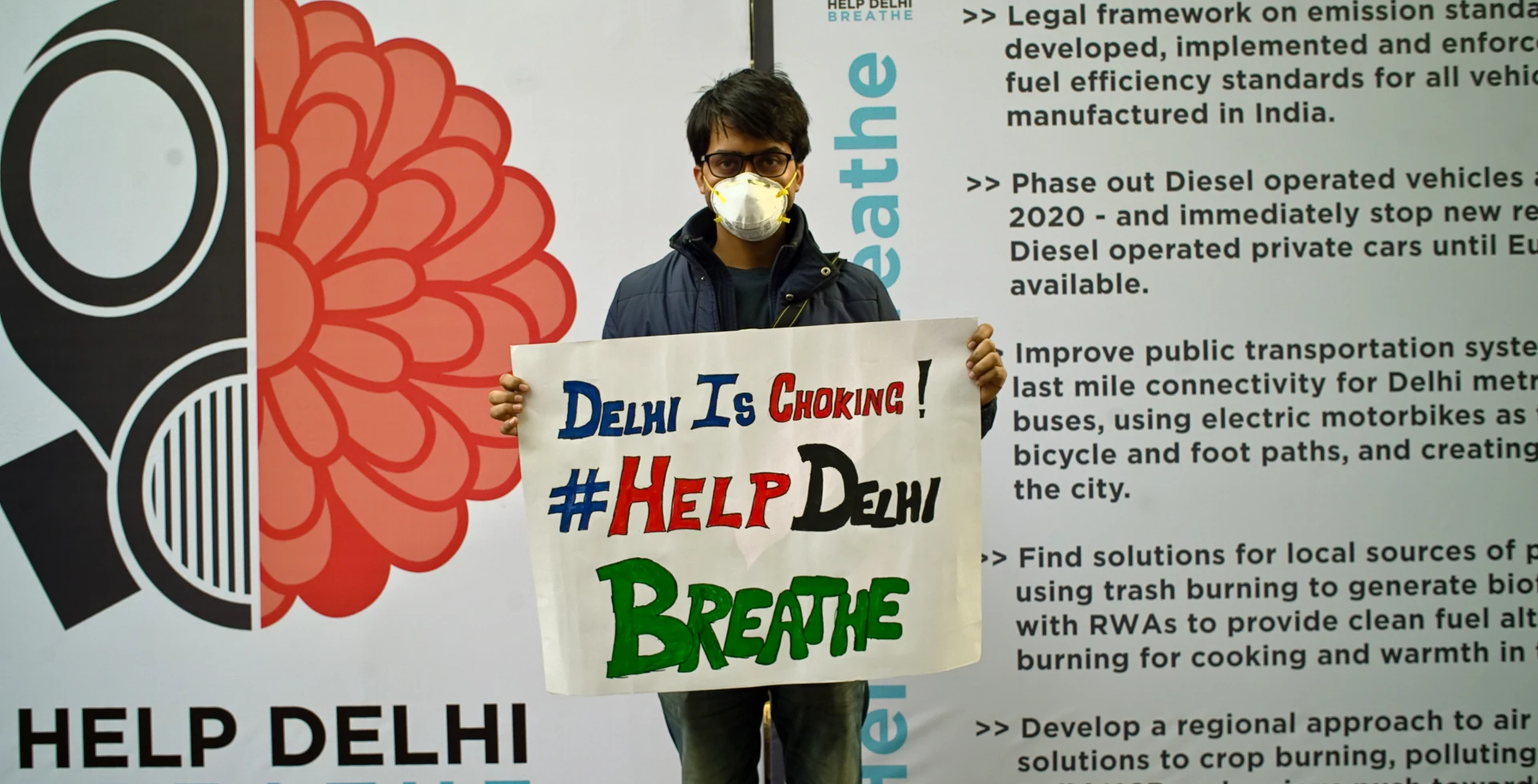Help Delhi Breathe
Building a coalition to act on crisis-level air pollution.
We worked with the IKEA Foundation and Clean Air Fund to develop Help Delhi Breathe, a campaign to mobilize Delhi residents against air pollution.

Key Outcomes
1,000 electric buses purchased across Delhi
Hundreds of auto rickshaw drivers circulated a petition and spoke with customers about the implications of air pollution
Tens of thousands mobilized through social media and a “missed call” cellphone petition.

Challenge
Air pollution is a global health crisis that causes over 6.5 million premature deaths every year. 1.6 million of those are in India, which houses 13 of the world’s 20 most polluted cities. In 2015, Delhi’s air pollution was worse than ever and severely impacting people’s health. As a result, community frustration was at fever pitch. Residents’ raw energy was undirected, and the health effects were not being connected to environmental policy solutions that would address the root cause.
Strategy
We developed a compelling strategy to channel people’s frustration and energy into effective advocacy to provoke action from the government. Working with partners, we educated individuals on the effects of air pollution and the potential solutions in order to mobilize them to demand change through social media and missed-call petitions. We used polls, social listening, diverse teams and strong branding to identify opportunities and spread our message far and wide.

Creative
We created a visual identity for the campaign that felt vibrant, action-oriented and true to Delhi. To make the campaign feel urgent and immediate, we used a series of photographs of Delhi residents in a widespread social media and advertising campaign. This helped raise the voices of the local community and share real lived experiences of neighbors struggling with the damaging impacts of air pollution.



Campaign
We united a diverse set of partners, from clean tech companies to nonprofits and community welfare groups, and provided the communication and social assets needed to amplify the coalition’s call for action against air pollution. To help seed the coalition, we provided an innovation micro grant which paid for the online and offline creative campaign materials. This helped to launch a coordinated response to worsening air quality.





Impact
This campaign contributed to raising the issue of air pollution as a political priority and saw the passage of new policies and legislation. This included increasing the number of air quality advisories in Delhi, a commitment to reassess emissions standards and the purchase of 1,000 electric buses across the city. It also prompted a commitment by the Health Minister to improve accessibility of air pollution data and led to passage of one of the strongest solar policies in the world.
“It is public opinion that drives action in this city. So that's the best way to bring the change makers together. The government has to take many difficult decisions and come up with a clear, time-bound action plan.”
Anumita Roychowdhury
Executive Director, research and advocacy with Centre for Science and Environment
“Let's make Delhi an example to combat air pollution and spread this across India to clean the air at a national level.”
Sunil Dahiya
Greenpeace campaigner


